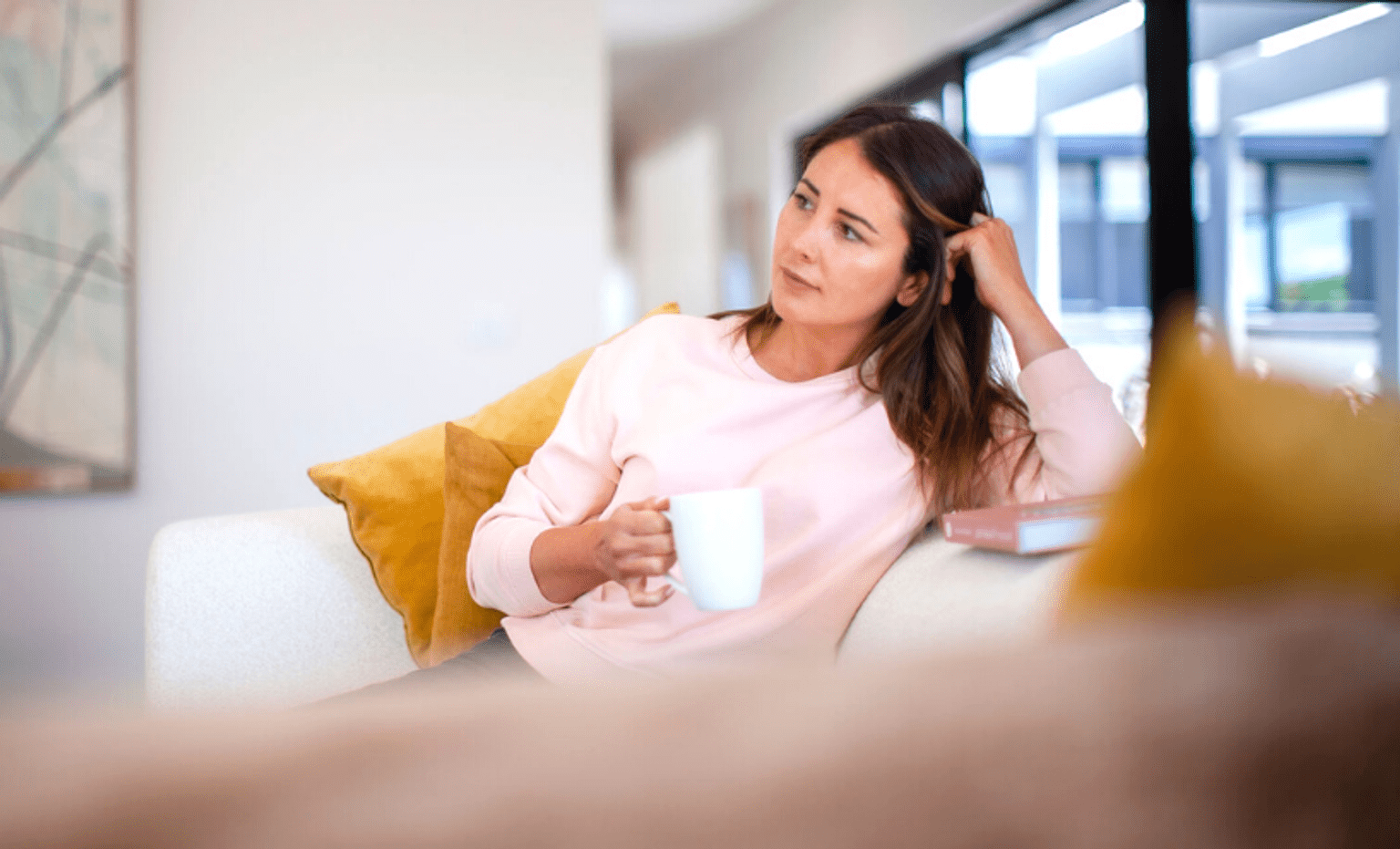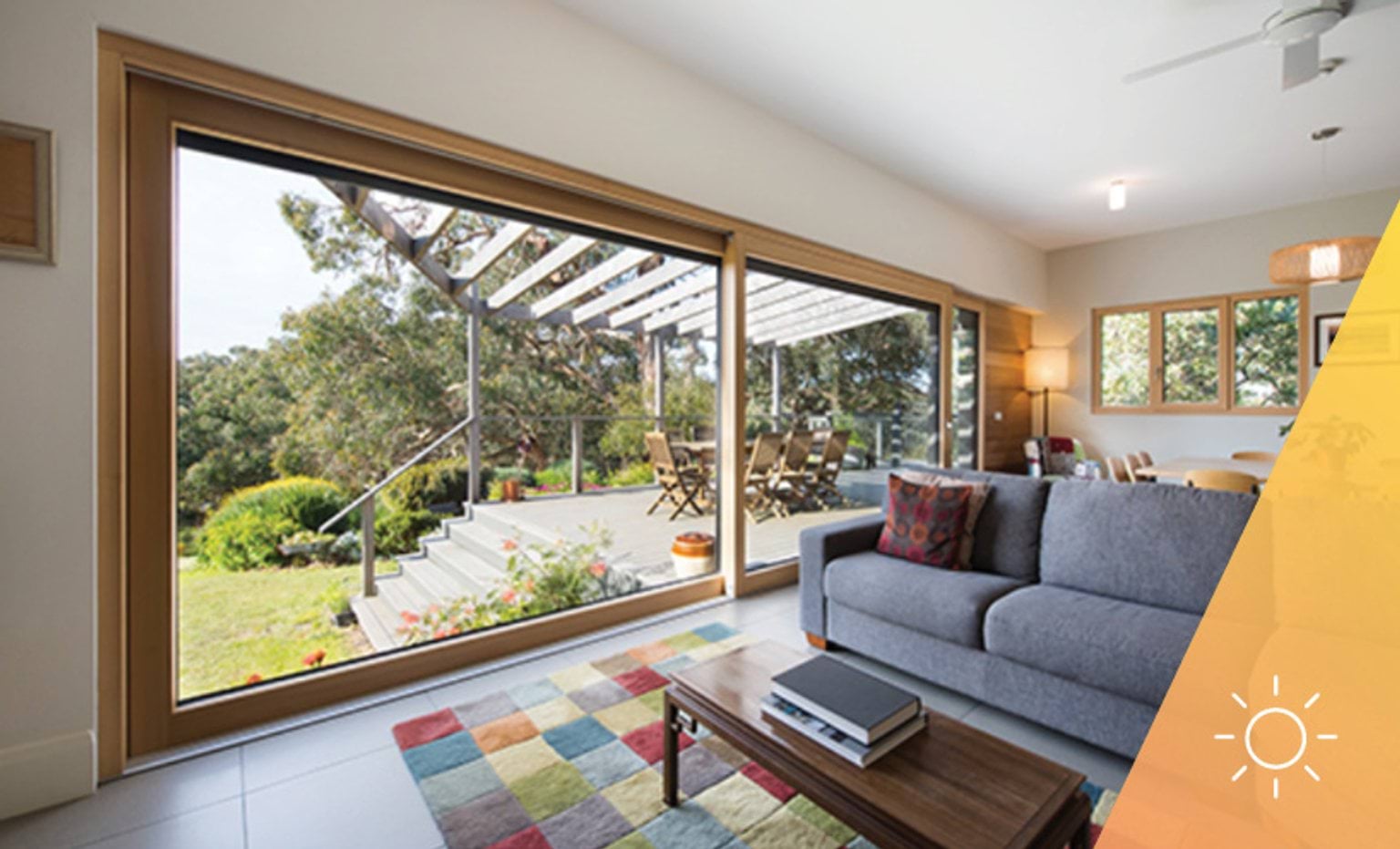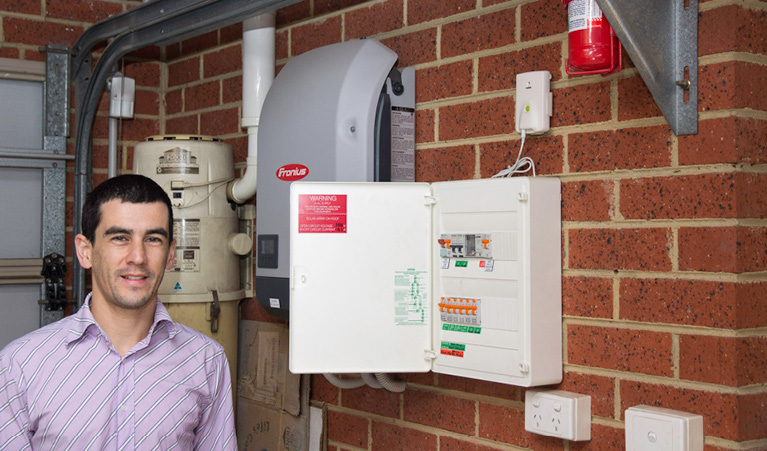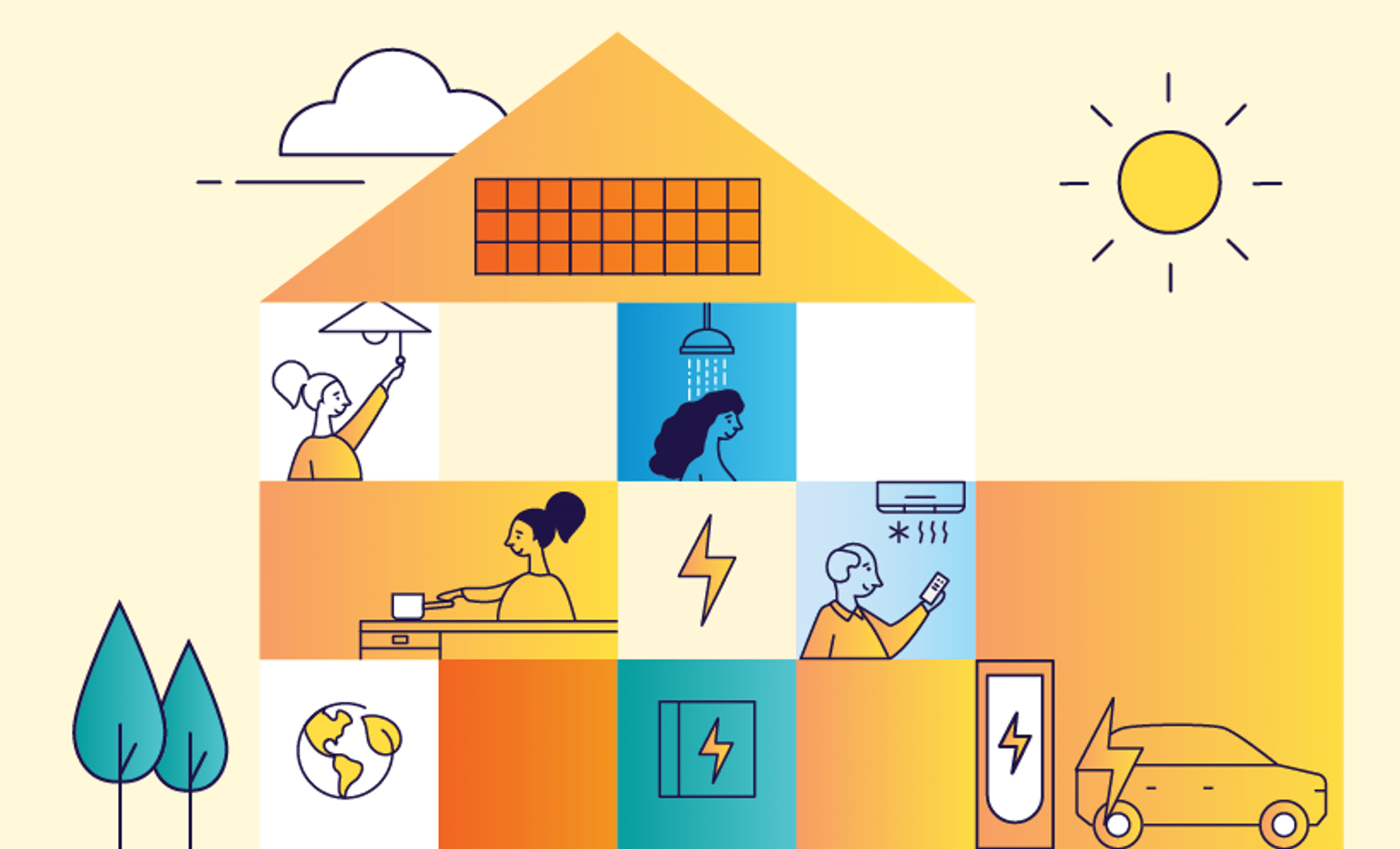A few years ago, homeowner Stephen Zuluaga started to look for ways to reduce energy costs at home. He came across research undertaken at the Melbourne Energy Institute which suggested that efficient electric appliances—including heat pump systems such as reverse-cycle units—could heat your home more cheaply than gas.
“Our house was like so many others,” says Stephen of his three-bedroom brick veneer townhouse in Carnegie. “We had some very common gas appliances at home.”
With winter coming and a young family at home most of the day, Stephen and his wife Stacey were concerned about huge bills from their gas ducted heating system. Typically, their gas bills usually jumped from $80 in summer to over $400 in winter.
“We decided to focus on installing a reverse-cycle heating and cooling system first because our gas central heater was super expensive to run. We also decided that if we were going to make capital investments, we would aim to get really good operating expense outcomes, so we went for a higher cost but higher efficiency unit.”
The family of four saved around $250 on gas bills that winter while heating their home with a reverse-cycle system on heating mode instead of their older gas ducted system. They went on to swap out the remaining gas appliances, installing an induction cooktop and heat pump hot water system. They then disconnected gas from their property and saved even more by eliminating their gas connection fee. In summer, they use the reverse-cycle unit to cool the home.
Stephen recommends carefully planning the reverse-cycle unit’s location and size to get a good result.
“Make sure you’re working with an expert on energy efficiency—just because someone has put in lots of air conditioners or water heaters does not mean they are knowledgeable about energy efficiency.”
In many cases homeowners will need to buy two or more reverse-cycle units due to house layout and size, but the layout on their 105 square metre home meant they could position a single unit to heat the whole house without compromising comfort.
“Stacey is much less tolerant of the cold than I am and she’s happy with the heating setup we have now.”
“On the coldest of winter days, the unit might take up to two hours to heat the whole house to the desired temperature, but we can set a schedule so that it comes on in advance of when it’s needed. We can also control the system via the internet—so if our plans change, we can alter the settings remotely.”

What is thermal comfort?
Thermal comfort is when you feel neither too hot nor too cold, especially indoors. Our health, wellbeing and productivity are all affected by thermal comfort.
Stephen and Stacey have also improved their home’s thermal efficiency to help reduce heating and cooling costs.
“There is no point saving on input energy for heating and cooling if it’s only to float away through poor door sealing or leaky vents,” says Stephen.
“We have double-sided foil insulation in the roof cavity attached to the underside of the rafters, mainly to reject heat from hot tiles in the summer, but this also helps retain some warmth in winter.”
“All our external windows and doors are draught-sealed and we don’t heat rooms like the laundry at all. In our living room we have two sets of large 2.5 metre-wide curtains and on top of them is a long sheet of acrylic sheet (perspex) to act as a hidden pelmet. This helps stop the warm air slipping down between the curtains and windows and being cooled.”
They’ve also added some low-cost secondary glazing to reduce heat loss through windows in winter.

Draughtproofing and insulation to keep warm this winter
Draughts can make your home far less comfortable than it should be in winter, and drive up energy use. Find out how to make the most of any solar-generated electricity.
Stephen and Stacey installed a 9.72 kW solar photovoltaic (PV) system to further reduce their bills in 2017. They had their roof restored before putting the panels on, and while doing so changed it from dark grey to light grey to reduce heat gain in summer.
“This has made a huge difference in summer,” says Stephen. “Our 3.5kW reverse-cycle unit can now keep our three-bedroom home cool on a run of 43 degree days.”
“We decided to upgrade our appliances first and wait to install solar because it allowed us to break up the capital expenses. Solar was going to cost more than those other upgrades.”
Having those efficient electric appliances in place, such as reverse-cycle heating and cooling, meant they could use solar-generated electricity to run them as soon as the new system was turned on, which has helped maximise their return from the system.
Stephen estimates the solar PV system saved them $831 last year on energy bills.
“We dipped our toe in the water when switching to efficient electric appliances by doing heating first, and it gave us a chance to understand how the tech would impact us living in the house. We’ve been completely happy with it, and we also have a chance to teach our kids about energy efficiency in addition to what they learn at kinder.”
“Of course, you’ll have to decide how far through their life your gas appliances are, but you can expect to save money on running costs when you do change them, as we found with our energy bills that first winter running our reverse-cycle system.”
Updated




